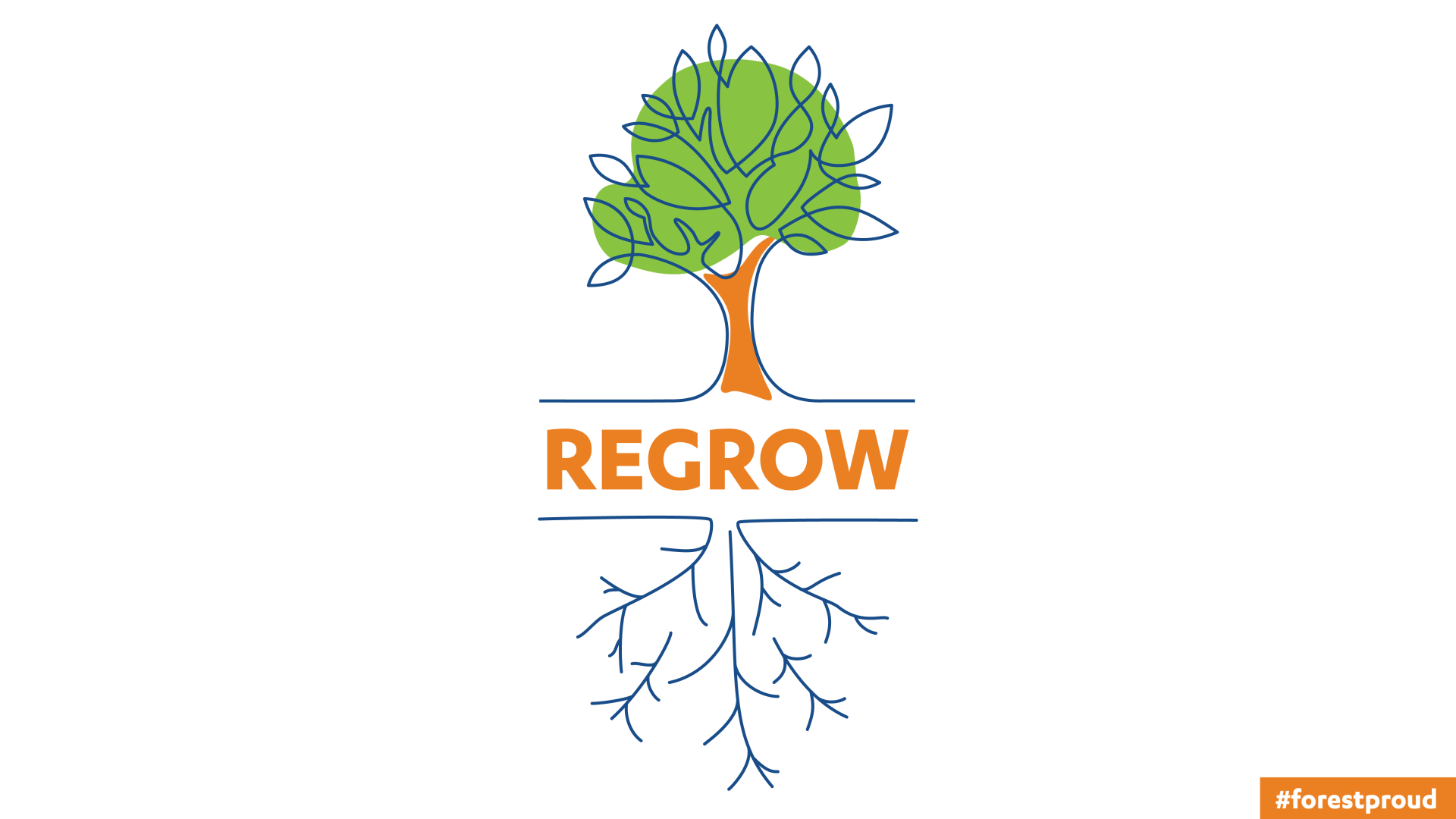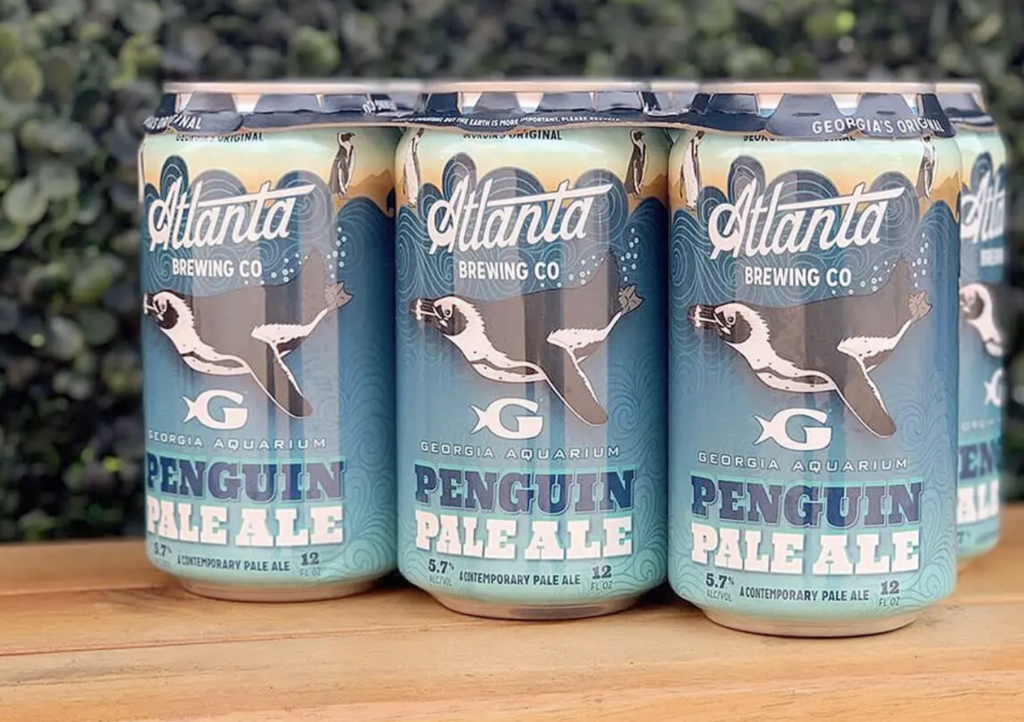a #forestproud unboxing experience
Packaging innovations help us shift from plastic to planet
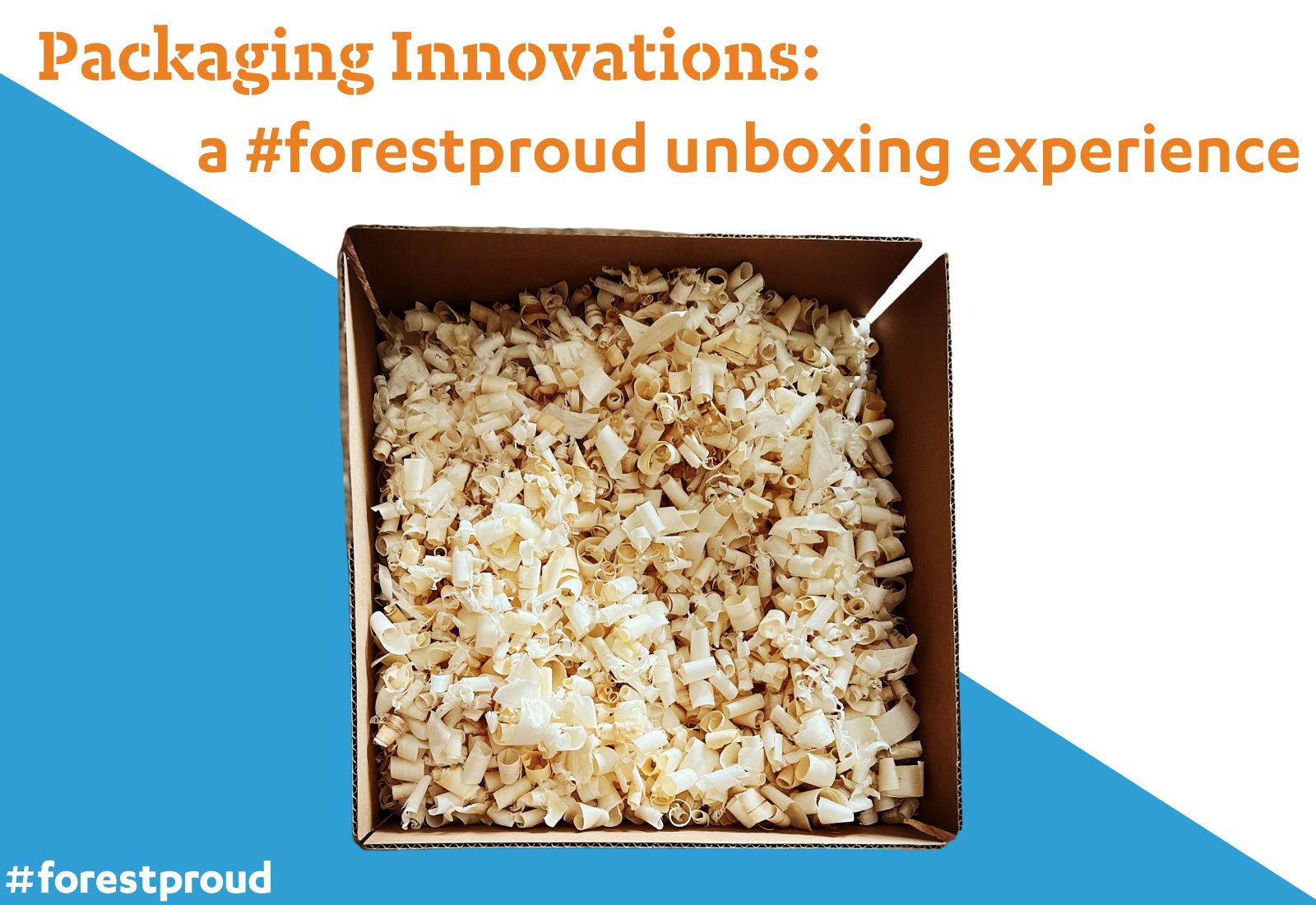
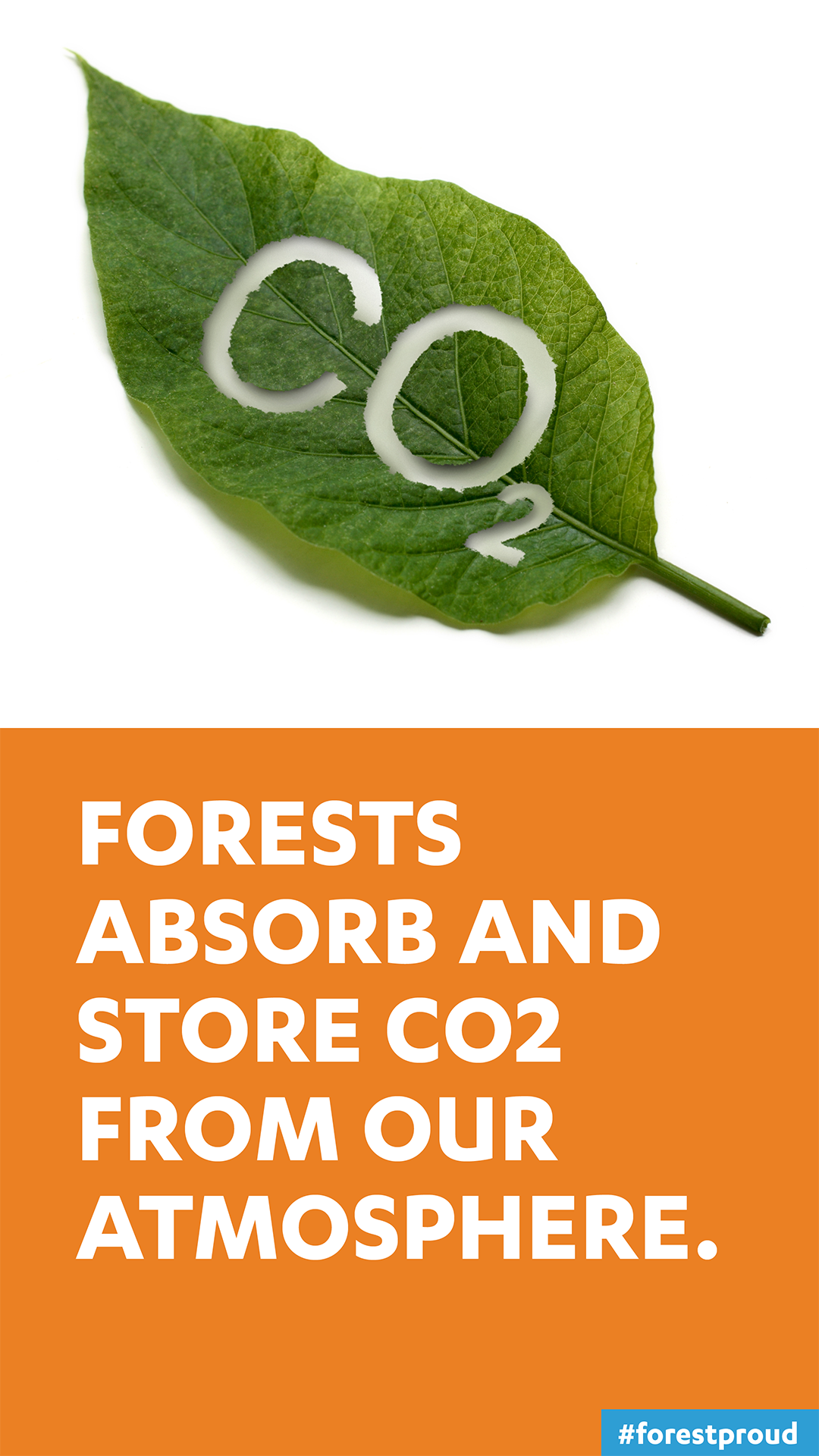
Plastics aren’t great for the planet. But when you look at the things we use every day, plastics and petroleum-based products are an essential part of our lives. Wouldn’t it be great if we could replace these unsustainable products with renewable, recyclable, biodegradable, carbon-storing options that are good for the planet – and still functional for our everyday needs?
We’re working on it as a society: consumers are more likely to BYOB[ags] to stores or ask for paper; plastic straws are on their way down; and concerns over single-use plastics are up. We spend a lot of time talking up paper plates, paper cups, compostable cutlery, and other standbys for helping consumers move away from single-use plastic.
How does this work? Micro to Macro 101.
Before we get too deep down the cool rabbit hole of packaging innovations, let’s touch on a few key #forestproud points.
1. Carbon. All trees capture and store carbon dioxide (CO2) from the atmosphere as they grow. They absorb this CO2 during photosynthesis, releasing O2, or oxygen, in their wake. The carbon that is captured by these trees is stored at a cellular level, imbuing this carbon in the wood products we use today. Likewise, as new trees are planted, more atmospheric carbon is captured throughout the growth process for future use.
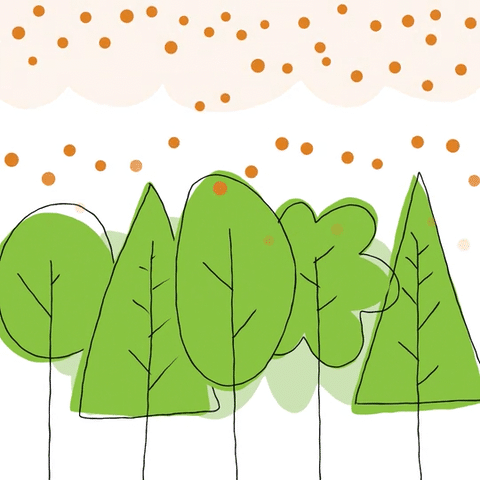
2. Cellulose. At a cellular level - one millionth the size of the head of a pin - are the microscopic building blocks of a tree. Cellulose is a basic building block of plant cells and is key to keeping plants and trees upright. (Think: those stringy bits in celery, but very, very small.) A single rod-like cellulose nanocrystal is the tiniest building block of wood. Cellulose (and its even smaller form: nanocellulose) is the most abundant biopolymer on the planet. These tiny fibers are full of stored carbon. Because of their structures, nanocellulose materials have a high rate of biocompatibility - meaning they can easily be added to, or combined with, other materials. Nanocellulose drives innovations that help design waste out of an already-efficient sustainable forest management cycle. By leaning into the unique properties of wood and cellulose, we can reduce our dependence on non-renewable resources and move towards a more sustainable future one teeny wood particle at a time.
3. Fiber. Wood fiber and pulp can be reused 5-7 times before it breaks down past the point of being structurally sound. That’s why most manufacturers use a combination of recycled and new wood pulp. After a certain point, the fibers wear out, just like your favorite jeans. But don’t worry – even this frayed fiber has new product potential because we can use it for a source of cellulose, and the sustainable cycle continues, down to the microscopic level.
4. Markets. A strong market for forest products ensures forest landowners can manage their land, pay taxes, keep forests as forests instead of selling land off for parking lots or new developments, pay for new baby trees, and meet wildlife and ecosystem goals like stewarding habitat, reducing wildfire risks, and supporting healthy forests that function as carbon sinks.

Why Sustainable Packaging?
Sustainable packaging is a critical component of our future. The paper and packaging industry is stewarding a wave of innovation, enhancing sustainability and functionality and paving the way for an eco-friendlier future. As consumers become increasingly conscious of their environmental footprint, the demand for sustainable packaging solutions will continue to grow. The journey towards sustainable packaging is ongoing, and these innovative solutions are a testament to our society’s demand and commitment to a greener future. By avoiding waste, conserving resources, reducing our global fossil fuels dependency with the associated carbon emissions, and minimizing environmental impact, sustainable packaging can help create a greener, more resilient global economy.
Sustainable packaging choices can take many forms, including:
- Biodegradable and compostable materials
- Recycled or up-cycled materials
- Reusable or refillable containers
- Minimizing energy required for production and transportation
- Ensuring that packaging can be easily recycled or disposed of in a responsible way
- Creating pathways and products to design out waste and reduce landfill content
There is a plethora of plant-based packaging options in the market, and all serve as viable solutions to phasing out plastic. But, in true #forestproud fashion, we're focusing on bio-based wood packaging to keep a focus on products that help keep forests as forests, store carbon, and meet our good-for-people-and-planet values.
Inside the box.
We're talking about old faithful - cardboard. And for good reason! We stan a good box. Solid, rugged, durable, and full of carbon down to its corrugated folds. Cardboard is the most frequently used packaging material because it is renewable, sustainable, and highly recyclable. Thanks to avid and dedicated recyclers like you, more paper by weight is recovered from municipal solid waste streams for recycling than plastic, glass, steel and aluminum combined. We’re not going to explore the process of recycling in this blog (but let us know if you’re interested and we’ll write it up).
For a true #forestproud unboxing experience, we want to look at ways that we can innovate and use wood-based bio-products inside the packing box.
We’ve all been there. You’re opening a new box, and inside, there’s plastic air cushions or, worse, those awful Styrofoam peanuts.
Now imagine opening that box and seeing nature.
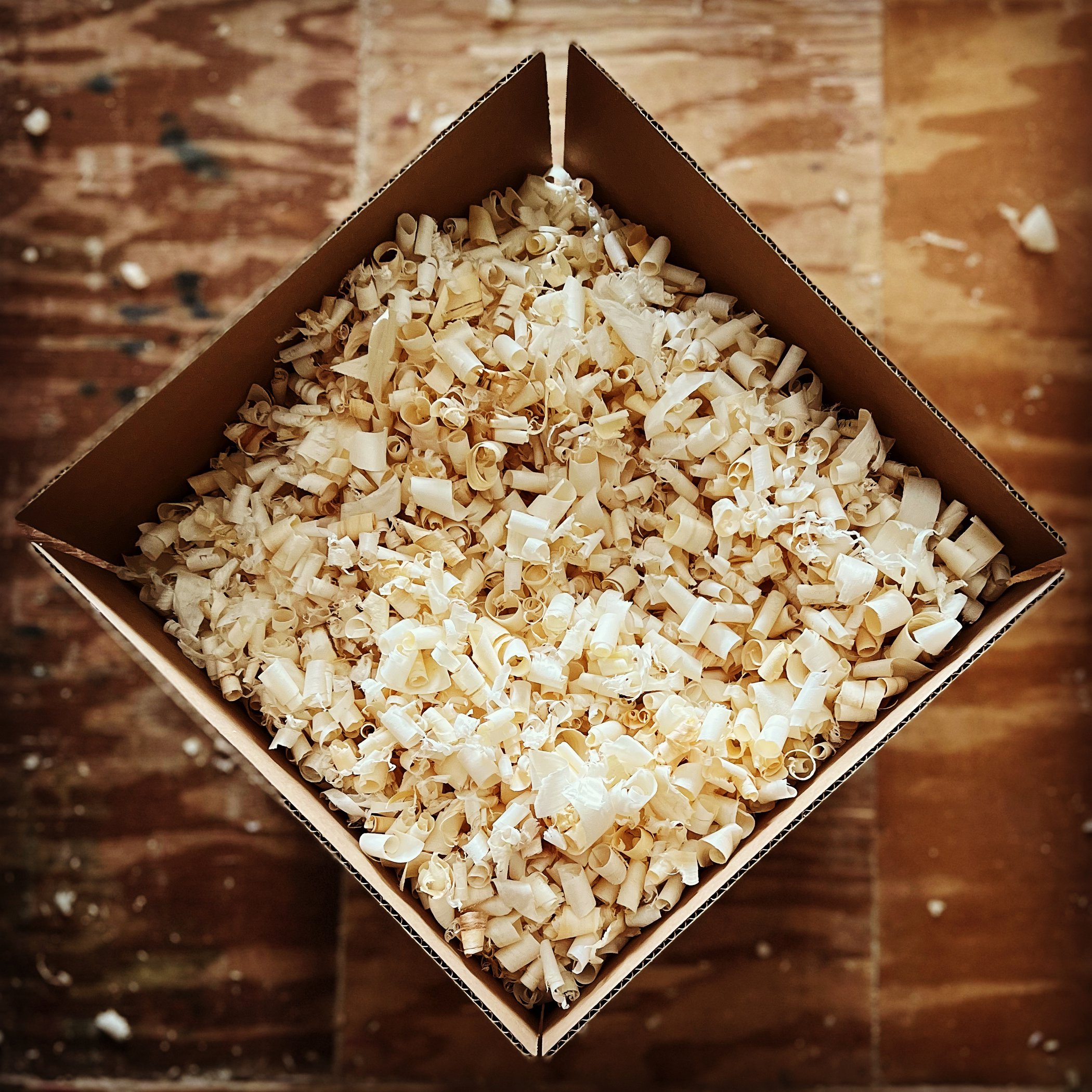
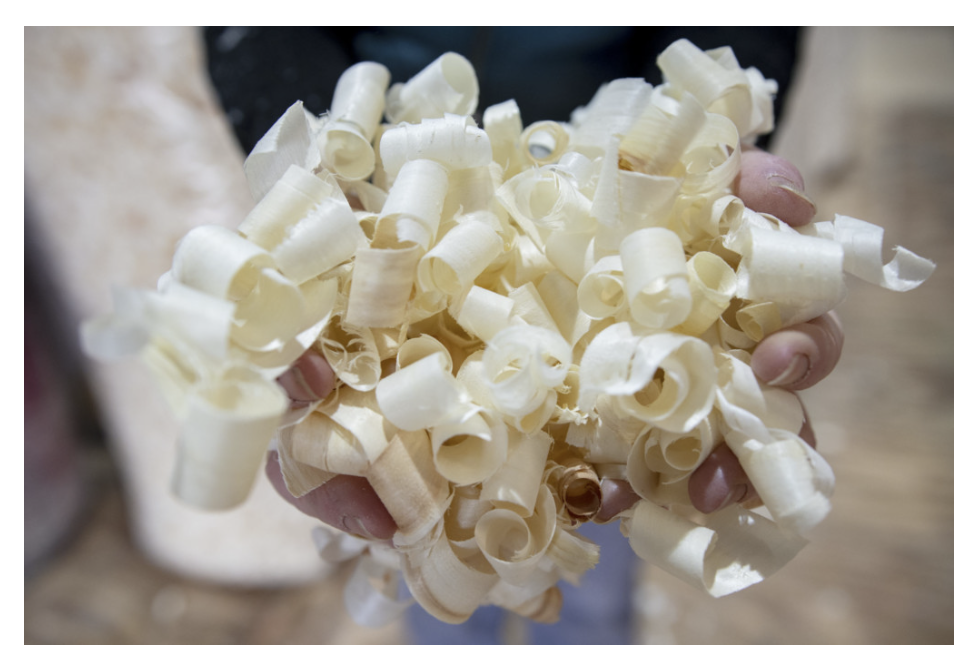
“While much of the world turned to cheap, petroleum-based packaging materials like Styrofoam peanuts [...], Sylvacurl founders Jim and Mary-Ellen Lovinsky turned to nature.” They use poplar, also called aspen, a fast-growing native species. Locally sourced in Vermont, poplar is perfect for manufacturing wood curls, being light in color with a neutral odor that won’t seep into jellies or jams, cheeses, and other artisanal products. Sylvacurl proudly “closes the loop” as a business. “In addition to the curls being biodegradable, the sawdust that they shake off prior to shipment is used for animal bedding on their farm, and later composted. From there, the compost is used to top dress their gardens, completing the cycle.” Customers are encouraged to use the wood curls as fire starter, garden dressing, mulch or compost, pet bedding and more, to close the loop themselves with an enclosed graphic and pamphlet in each order. Peak #forestproud.
Now we’re pawing through these lovely wood curls, digging out our new purchases. Instead of pulling out plastic bottles and bags – depending on your interests – here’s some stuff you could have bought:
Beer.
Yep, WestRock's CanCollar is a paper-based alternative to plastic rings used to hold multi-packs of cans. This sustainable solution, adopted by major craft brewers, reduces plastic waste and is fully recyclable. CanCollar not only provides an eco-friendly option for beverage packaging but also supports the industry's efforts to reduce plastic pollution. With new beer rings made of cardboard, you have your beer and recycle it all. So go ahead, crack a beer, save the ducks, support wildlife habitat.
Mentos and more.
Graphic Packaging's Boardio paper-based bottle, developed in collaboration with Perfetti Van Melle for Mentos gum, is a game-changer and a 2023 American Forest & Paper Association Sustainability Award-winner. This innovative solution provides a renewable and recyclable alternative to traditional plastic bottles. Made entirely from paper, Boardio reduces plastic use and can be recycled curbside, offering a sustainable and convenient option for consumers. Designed for a range of applications including dry mixes, coffee, snacks, confectionery, nutrition powders, and more, Boardio is an alternative to rigid plastic, glass and metal containers.
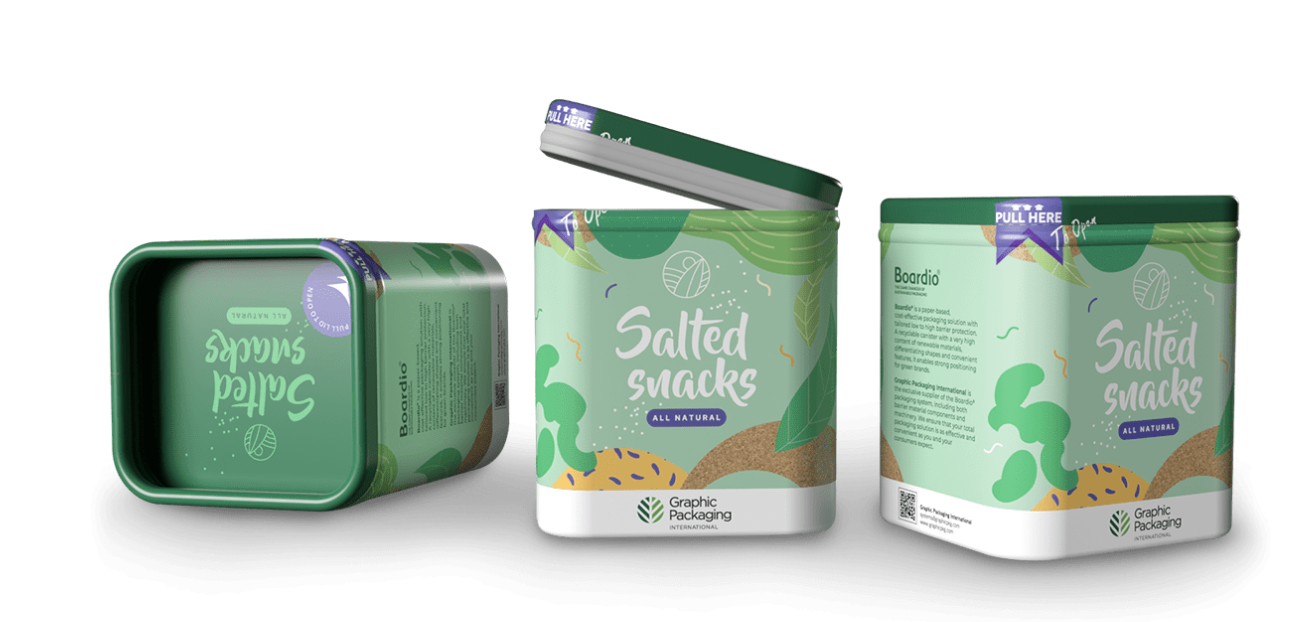
Clothing.
Another American Forest & Paper Association's 2023 Sustainability Award winners, Seaman Paper’s innovative Vela™ bags, “are a paper alternative to replace single-use plastic poly bags. Vela™ bags are transparent paper transport bags that are FSC® certified, weather-resistant, durable enough to withstand supply chain demands, and certified recyclable. Seaman Paper is currently partnering with hundreds of environmentally conscious brands – across 36 countries – in progressing their sustainability goals of reducing single-use plastics through their global supply chains. [Side note: we’re working on a blog about wood-based clothing and decarbonizing the fast fashion supply chain, starting with bags and ending with dresses and dyes.]
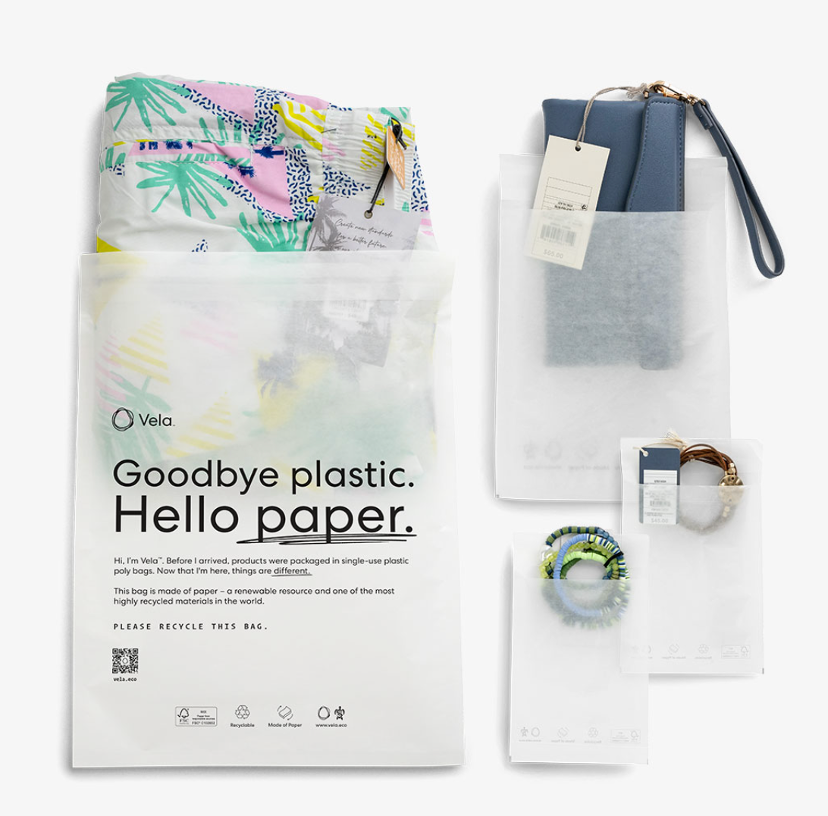
Pet food.
Ahlstrom's PawPrint Sustainable Pet Food Packaging is making waves in the pet food industry. Another AF&PA Sustainability Award-winner, this innovative packaging solution is non-PFAS, grease-resistant, and fully recyclable, addressing the need for sustainable options in a market traditionally dominated by plastic. PawPrint packaging not only reduces environmental impact but also maintains the functionality required for pet food storage, ensuring that sustainability does not compromise quality. Pet food brands are getting on board, making the shift from plastic to paper.
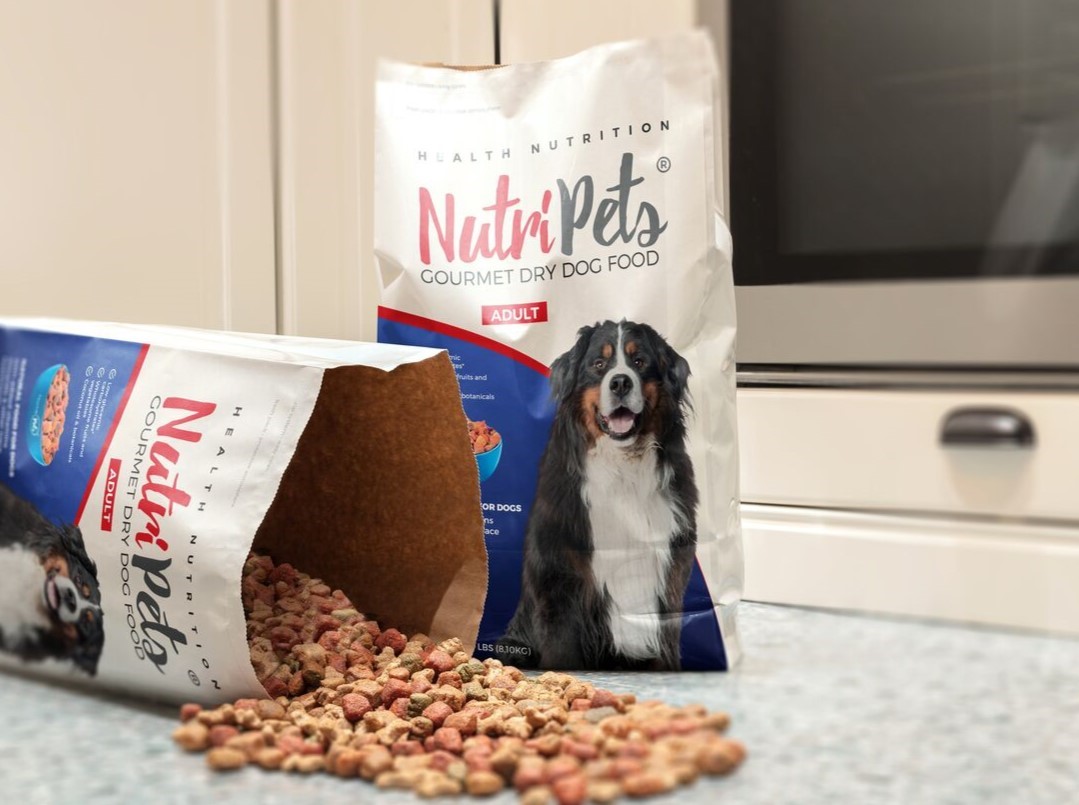
Makeup, technology, art, and more.
Manufacturers and makers of fragile items that are traditionally shipped in closely fitting Styrofoam cutouts can now pilot bio-based foam. Stora Enso, a Stockholm, Sweden-based company, is piloting their newest packaging offerings: Fibrease and Papira. These bio-based foams come from certified wood, are fully recyclable, and can be used for protective and thermal packaging.
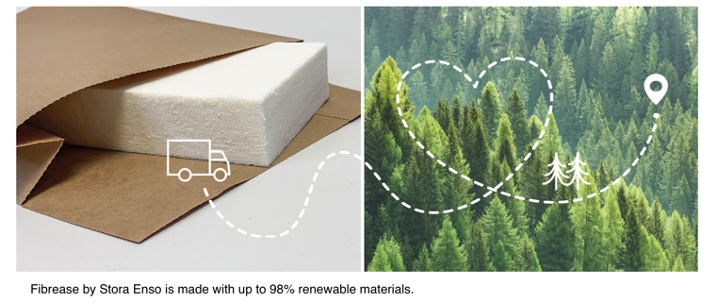

In forestry, sustainability isn't just a buzzword; it's a crucial aspect of balancing and maintaining forests and all the great things they do for people and planet.
Forests are intricate ecosystems. Through sustainable forest management practices, foresters and other natural resource professionals ensure forests continue to delicately balance the needs of society for biodiversity, carbon storage, timber production, clean air, clean water, and quality of life essentials.
As we embrace the shift towards bio-based, renewable, and sustainable products and transition away from fossil fuels and plastics, it’s more important than ever to manage our forests to meet the needs of today and of tomorrow. By implementing sustainable forestry practices, we're not only protecting wildlife habitats, delivering essential products, and needed innovations but also mitigating the impacts of climate change. Managing forests responsibly reduces our carbon footprint, supports a thriving bio-based economy, and ensures a stable supply of wood-based products.
We hope you are inspired to choose sustainable packaging and take a deep dive into the world of packaging innovations, with all these new links to guide you. Your consumer choices directly impact the products available to support our future consumer choices, our forests, and our ability to deliver, sustain, and scale forest-climate solutions like the innovations featured here.
As a bonus, the sustainable packaging world is continually innovating to come up with cool new ways to design waste and fossil fuels out of the supply chain and create more efficient packaging strategies. Check out the Pack It! The Packaging Recycling Design Challenge, a two-episode series hosted by Netflix’s “Nailed It!” winner, social influencer and art teacher, Cassie Stephens.
Happy packing. Thanks for reading this far. We appreciate you making choices that affect people and planet, today and tomorrow. We all have a part to play in keeping forests as forests - and it starts with you. So keep the 5Rs of #forestproud in mind, today and every day.
